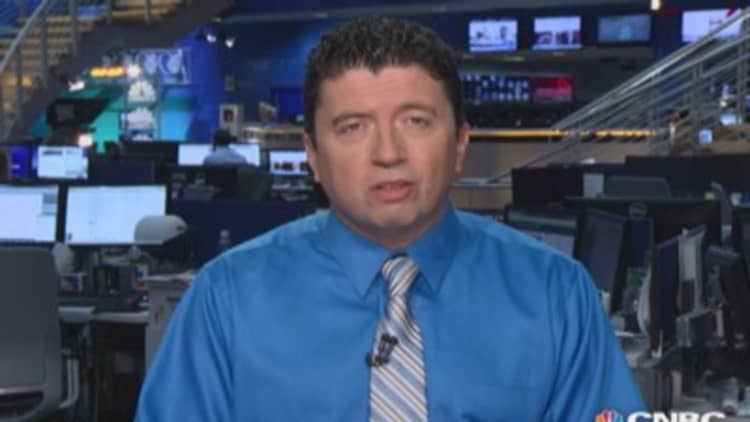
The summer of 2014 is starting to look a lot like the summer of 2011, according to one Wall Street strategist who sees a sharp stock market slump lurking over the next couple of weeks.
Though he is otherwise strongly bullish, Jeffrey Saut, chief market strategist at Raymond James, believes a run higher that has been virtually unabated for the past two years now faces a major challenge.
In 2011, as now, the major averages hovered around psychological barriers. In 2011, it was a sort of gravitational pull lower for the , which peaked at 1,356 then began an aggressive slide to 1,100, a level it would crack in early October before making a bottom shortly thereafter.
In this case, the S&P 500 is flirting on the upside with 2,000, the Nasdaq has held above 4,000 since April and the Dow industrials index has eclipsed 17,000. Citing corroborating opinions from Marketfield Asset Management and Thackray's Seasonal Investment Guide, Saut sees the market heading into a summertime swoon that has been replicated before.
Read MoreHere's how incredibly quiet stocks are right now
Recall, the (S&P 500) peaked the second week of July (2011) at ~1356 and began to slide. That slide accelerated in late July into early August, culminating with the psychological low of August 9 at 1,100. From there the SPX was range-bound between roughly 1,120 and 1,220 until its undercut low (below the psychological low of 1,100) of October 4, 2011 at 1075. At that point the bottoming process was complete with the SPX never experiencing anything more than a 10 percent decline. In fact, since the 10 percent pullback of April through June 2012, there has not been even a 10% drawdown.
Saut sees the market's "internal energy readings" at levels around the summer of 2011, and believes investors should take heed as that period saw an 18 percent slide before steadying and leading to the current rally.
He joins a chorus of other market pros calling for a correction—predictions that all have been proven wrong. The market is up 27 percent since its last meaningful pullback in 2012.
Read MoreBest and worst predictions of the past 25 years
I am making a "call" for the potential of the first decent pullback of the year to begin in mid-July or early August; and am recommending culling non-performing stocks from portfolios to raise cash. If said decline fails to materialize, we can always recommit the cash to more favorable situations because longer-term I believe this secular bull market has years left to run.
Saut does not believe the summer stumble will be as bad as the one in 2011. Rather, he expects the decline to be more in the 10 percent to 12 percent range "albeit within the construct of a secular bull market that has years left to run."
To back up his near-term thesis, though, he also noted that the 1965 market bears resemblance to current trends, both in market patterns and in geopolitical disturbances in the news cycle.
Read MoreStiglitz:'Very uncomfortable' with stock levels
If you study the last two cyclical bull moves, both of them ended in either one of two ways. They either failed to better a number like 2000, or they made a peak-a-boo look above a similar number. In either event, this feels more like a crescendo to me rather than the start of a new leg to the upside.
—By CNBC's Jeff Cox






